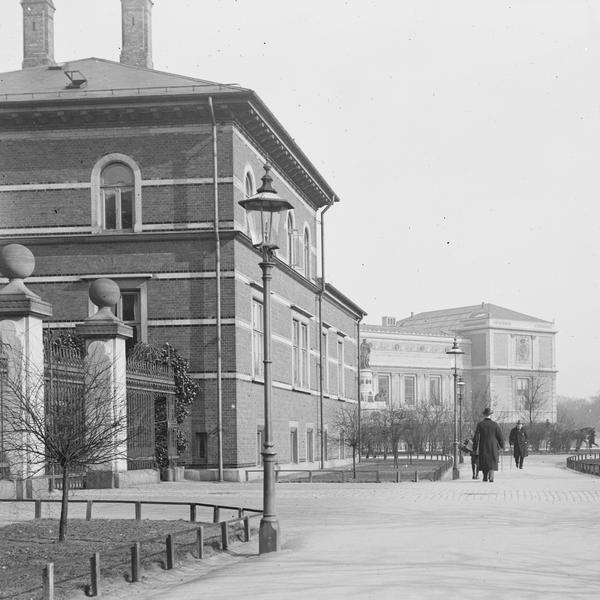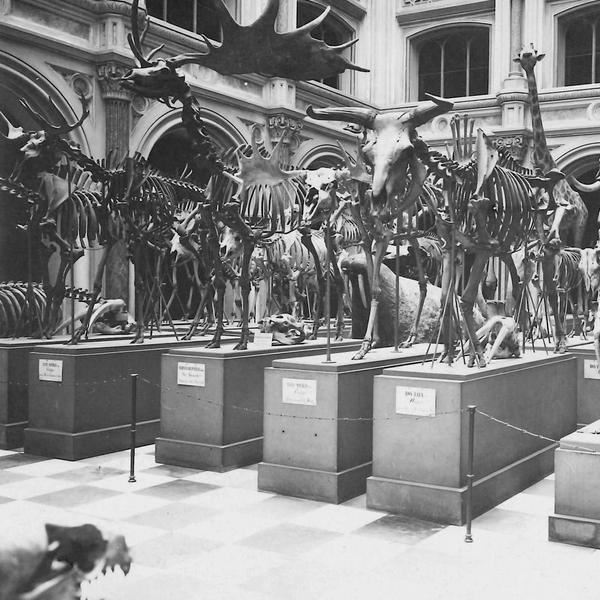The story of the Botanical Garden
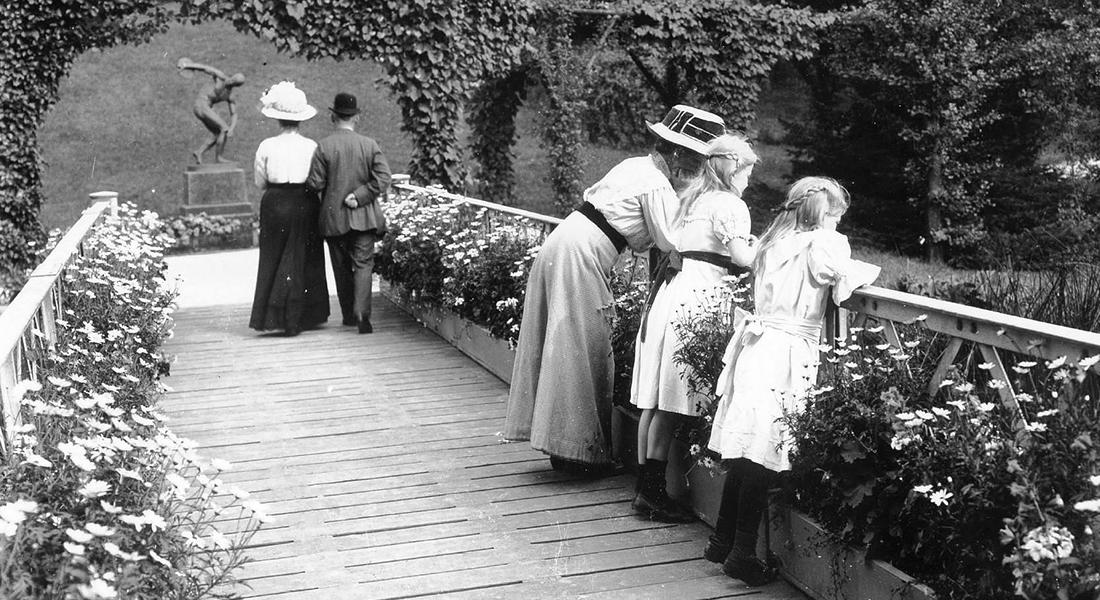
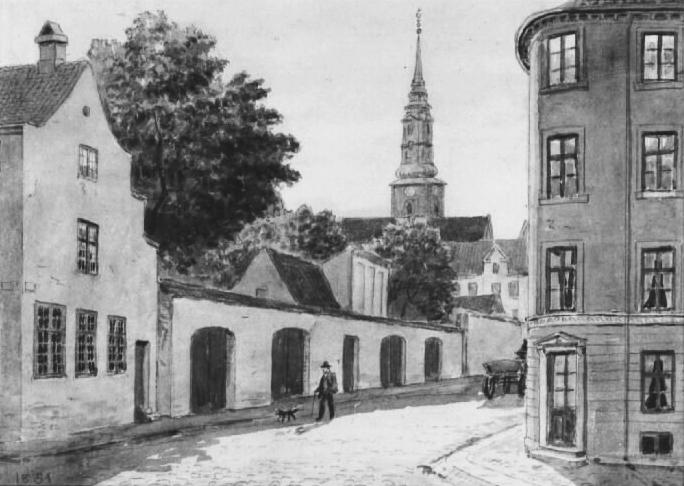
Behind the wall, the remnants of Hortus Medicus can be seen. The painting, created in 1854, depicts the view from the corner of Fiolstræde and Krystalgade.
1600
Hortus Medicus
Copenhagen University's first botanical garden, Hortus Medicus, was established by Christian IV with a royal charter and grant on August 2, 1600. The site was located at Skidenstræde, now known as Krystalgade, where the Zoological Museum would be situated 270 years later. A residence for one of the university's professors was built on the grounds, surrounded by land for a botanical garden.
At that time, the Botanical Garden was a medicinal herb garden intended to support the teaching of medical science.
At that time, the Botanical Garden was a medicinal herb garden intended to support the teaching of medical science.
1752
Oeders Garden
The University of Copenhagen's second botanical garden was established in 1752 at the behest of Frederik V. The garden was located north of Frederiks Hospital, with Amaliegade dividing it into two parts: a western section of 11,106 square alen and an eastern section of 24,539 square alen, although the latter was never utilized. Only the smaller garden was partially completed, with greenhouses being constructed, and it opened to the public in 1763.
The garden's director was the German-born G.C. Oeder. To emphasize the garden's economic significance, Oeder proposed publishing an illustrated work of all Danish and Norwegian plants, marking the beginning of Flora Danica.
The garden's lifespan was short. The king repurchased the land in 1778 and donated a new site for a botanical garden at Charlottenborg.
The garden's director was the German-born G.C. Oeder. To emphasize the garden's economic significance, Oeder proposed publishing an illustrated work of all Danish and Norwegian plants, marking the beginning of Flora Danica.
The garden's lifespan was short. The king repurchased the land in 1778 and donated a new site for a botanical garden at Charlottenborg.
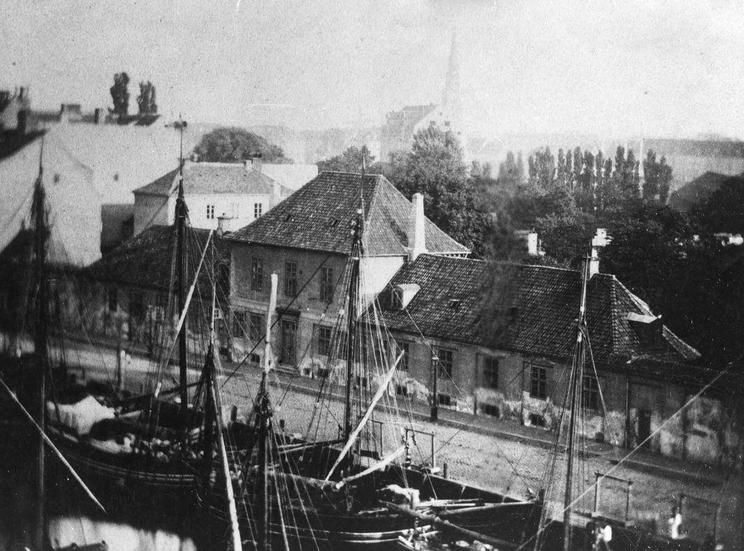
The Botanical Garden at Charlottenborg viewed from Nyhavn. You can just see the vegetation behind the harbor houses.
1778
The Garden at Charlottenborg
The plans for the new botanical garden in the palace garden at Charlottenborg were approved by the king on July 22, 1778. The garden was located between Charlottenborg, Nyhavn, Mynten, and Bremerholm, covering an area of approximately three tønder land. The main building was constructed facing Nyhavn, housing the Botanical Museum and the residences for the garden's director and the botanical gardener.
The garden's first greenhouse, Guiones Koldhus, was built in 1784, and from 1837 and in the following years, several new greenhouses were constructed. To support the garden's operations, income was generated from the sale of plants and seeds, which was common practice for European botanical gardens at the time.
Charlottenborg Garden became the setting for a very fruitful development in several ways. In the years following its opening, new botanical positions were established, including botanical gardener, lecturer, and professor in botany and plant taxonomy. These new positions marked botany as an independent science in Denmark.
Space in the garden at Charlottenborg quickly became cramped, and from 1842 and in the following years, the necessity for relocation to the current grounds at Østervold became increasingly apparent.
The garden's first greenhouse, Guiones Koldhus, was built in 1784, and from 1837 and in the following years, several new greenhouses were constructed. To support the garden's operations, income was generated from the sale of plants and seeds, which was common practice for European botanical gardens at the time.
Charlottenborg Garden became the setting for a very fruitful development in several ways. In the years following its opening, new botanical positions were established, including botanical gardener, lecturer, and professor in botany and plant taxonomy. These new positions marked botany as an independent science in Denmark.
Space in the garden at Charlottenborg quickly became cramped, and from 1842 and in the following years, the necessity for relocation to the current grounds at Østervold became increasingly apparent.
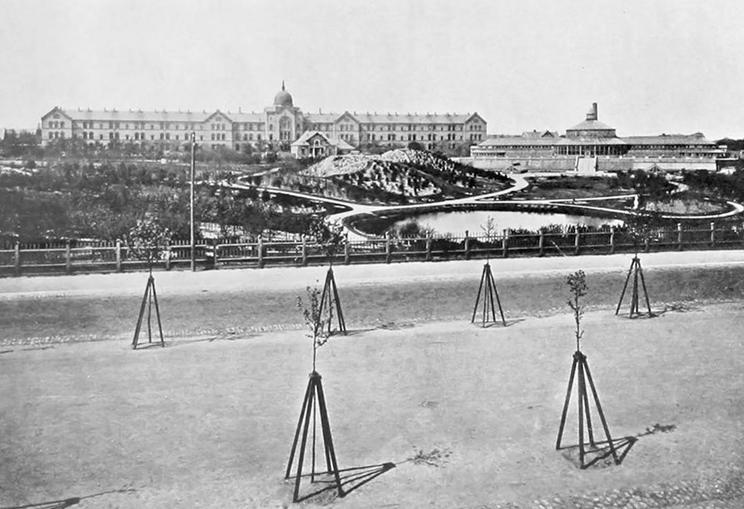
The newly established Botanical Garden in the early 1870s.
1874
The Current Botanical Garden at Østervold
According to the Demarcation Line Act of July 6, 1867, paragraph four, it was determined that an area of up to 21 tønder land could be allocated for the establishment of a botanical garden. After negotiations regarding property rights and other matters, a grant of 35,000 rigsdaler was approved in the 1871-72 budget for the creation of a new botanical garden.
Landscape gardener H. A. Flindt developed the plans for the garden's layout and terrain design, while palace gardener Tyge Rothe and brewer I.C. Jacobsen oversaw the planning and supervision of the greenhouse construction from 1872-74. The Palm House was designed by city architect Peter Christian Bønnecke. For its time, the large greenhouse complex was an impressive structure made of cast iron, glass, and wood, with a ground area of 2400 m². On October 9, 1874, the garden opened to the public, 274 years after the establishment of the first botanical garden (Hortus Medicus).
Landscape gardener H. A. Flindt developed the plans for the garden's layout and terrain design, while palace gardener Tyge Rothe and brewer I.C. Jacobsen oversaw the planning and supervision of the greenhouse construction from 1872-74. The Palm House was designed by city architect Peter Christian Bønnecke. For its time, the large greenhouse complex was an impressive structure made of cast iron, glass, and wood, with a ground area of 2400 m². On October 9, 1874, the garden opened to the public, 274 years after the establishment of the first botanical garden (Hortus Medicus).
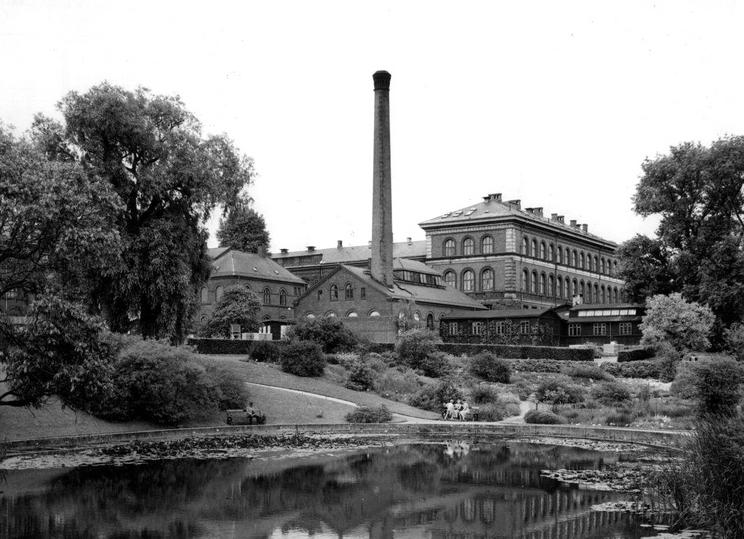
Polytechnic Institute seen from the Botanical Garden in 1955. Photo: Copenhagen City Archives
1905
The area of the garden is changing.
The garden's area has been reduced twice. The first time was in the early 1900s when a section was given to the Polytechnic Institute. As compensation for this cession, an area along Sølvgade could be leased, provided that the garden was opened for through passage via the main path to a gate at Sølvgade.
The new area was initially developed as an annual plant section and later expanded in 1963. On the garden's anniversary in 1974, the Copenhagen Municipality issued a declaration stating that the area could continue to be leased and managed by the Botanical Garden in the coming years.
The new area was initially developed as an annual plant section and later expanded in 1963. On the garden's anniversary in 1974, the Copenhagen Municipality issued a declaration stating that the area could continue to be leased and managed by the Botanical Garden in the coming years.
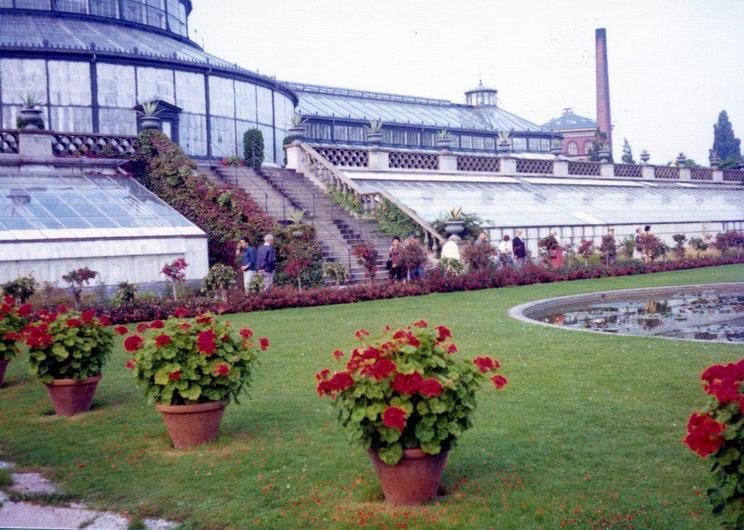
The Palm House during the Botanical Garden's 100th anniversary in 1974. Photo: Museum of Copenhagen.
1959-1983
Changes over the Years
With respect for the historical layout of the garden, several changes and reorganizations have been necessary to ensure its continued operation. For example, the growth of trees made it necessary to move all the beds from the grassy areas to consolidated quarters. Better utilization for work and study led to the establishment of an extensive path system, and to create better growth conditions, new installations were made, and large parts of the rockeries were reorganized.
A greenhouse for Arctic plants was built in 1959, and three experimental greenhouses were added between 1963 and 1983. The alpine greenhouse was constructed in 1973, and in 1980, a greenhouse for cold-temperate plants was established. The alpine greenhouse and one of the experimental greenhouses were gifts from the Carlsberg Foundation in celebration of the garden's 100th anniversary in 1974.
The old head gardener's residence was converted into the garden's administration building in 1975. The renovation of the Palm House complex involved the construction of a new heating plant with workspaces for gardeners and the adaptation of the Sølvtorv complex's machine hall into staff rooms, workshops, and workspaces for the garden staff. Additionally, the gatehouses at Sølvgade and Gothersgade were refurbished.
A greenhouse for Arctic plants was built in 1959, and three experimental greenhouses were added between 1963 and 1983. The alpine greenhouse was constructed in 1973, and in 1980, a greenhouse for cold-temperate plants was established. The alpine greenhouse and one of the experimental greenhouses were gifts from the Carlsberg Foundation in celebration of the garden's 100th anniversary in 1974.
The old head gardener's residence was converted into the garden's administration building in 1975. The renovation of the Palm House complex involved the construction of a new heating plant with workspaces for gardeners and the adaptation of the Sølvtorv complex's machine hall into staff rooms, workshops, and workspaces for the garden staff. Additionally, the gatehouses at Sølvgade and Gothersgade were refurbished.
1977
Protection for the Future
To ensure the garden's preservation for the future, a conservation declaration for the Botanical Garden was issued in January 1977, covering the garden in general and specifying the areas that may be developed in the future.
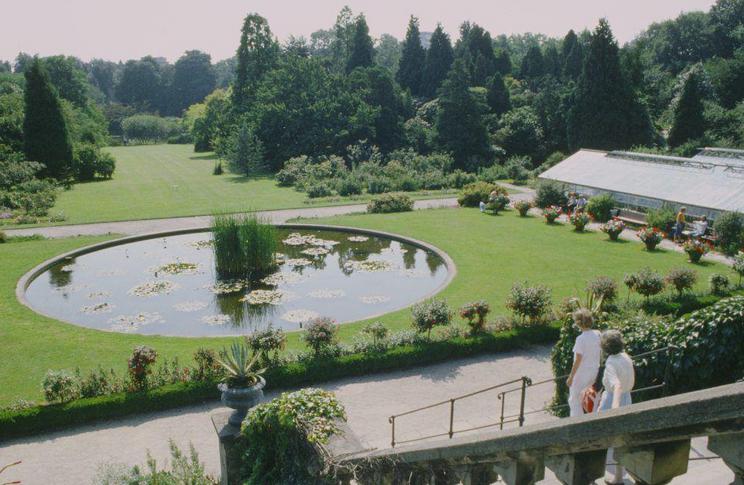
The Botanical Garden seen from the platform in front of the Palm House in 1985. Photo: Bent Krøyer.
1982
The Palm House Undergoes Renovation
In the 1970s and 1980s, the garden's buildings and greenhouses had become so outdated and deteriorated that comprehensive changes were necessary. All greenhouses were either renovated or newly built, and most importantly, the large Palm House complex was renovated between 1980 and 1982.

Gartnerne arbejder på et nyt kvarter på plænen foran Palmehuset i Botanisk Have i 2013. Foto: Poul Arne Krogh Larsen
2012
Renewed and Beautified
From 2009 to 2012, the Botanical Garden underwent an extensive renovation carried out by landscape architect Jens Hendeliowitz, in line with landscape gardener H. A. Flindt's original garden plan from 1874. Hendeliowitz is also known for the restorations of the palace gardens at Fredensborg and Frederiksborg, as well as the King's Garden in Copenhagen.
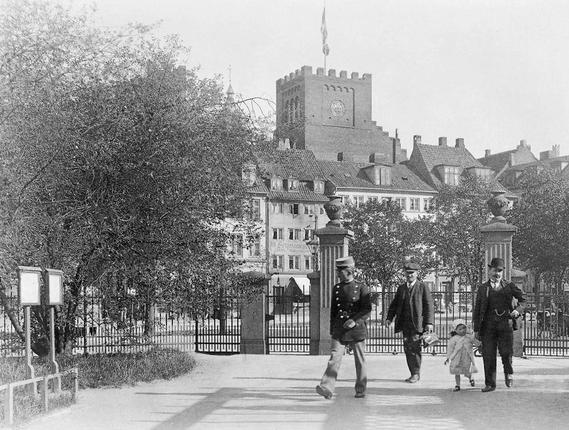
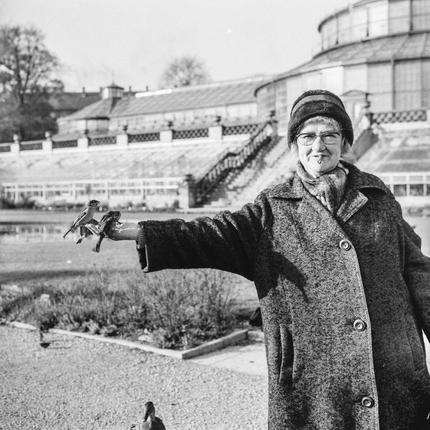
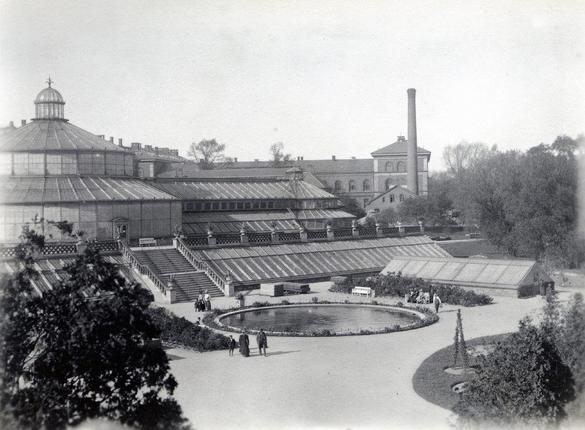
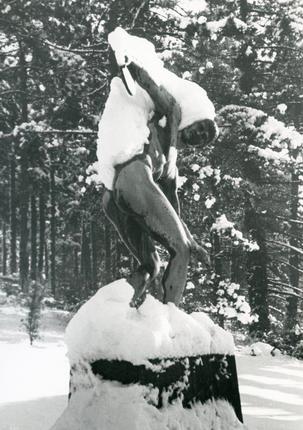
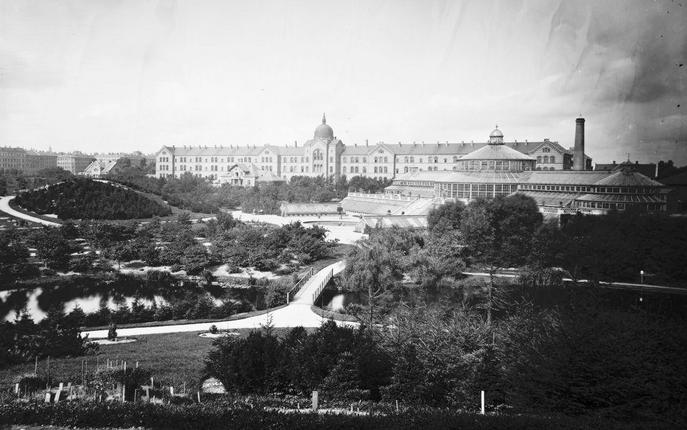
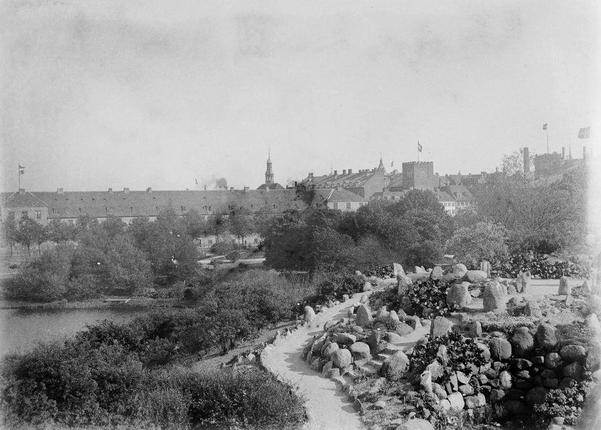
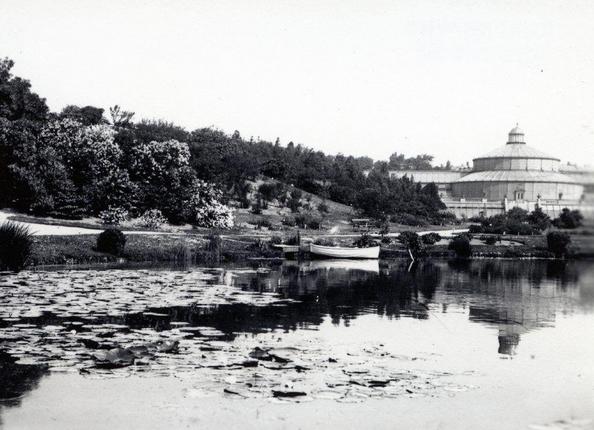
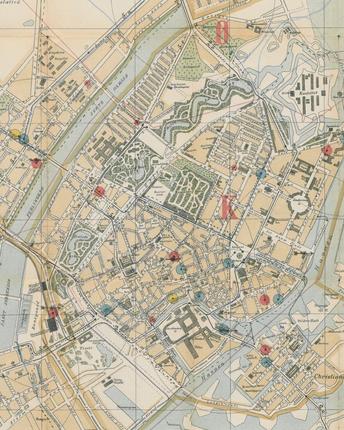
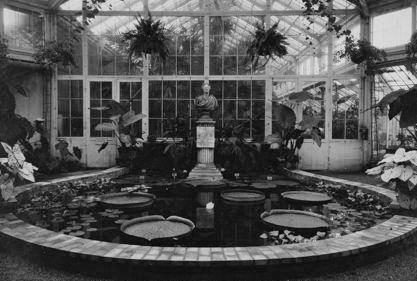
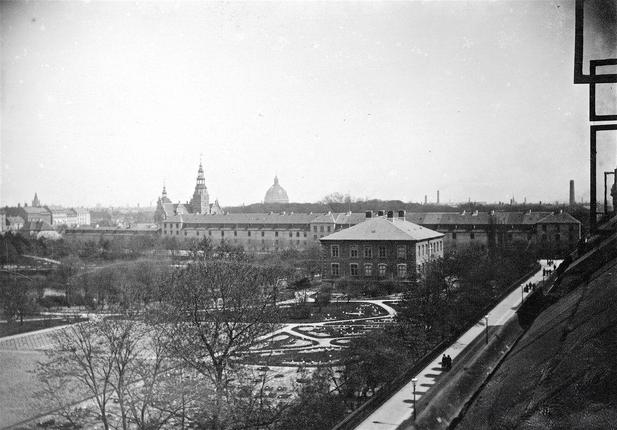
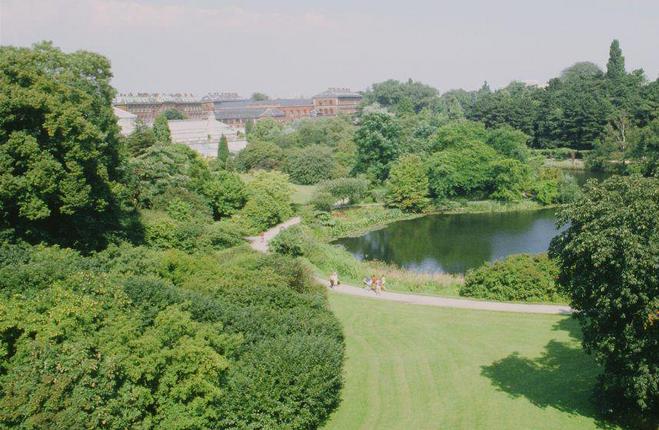

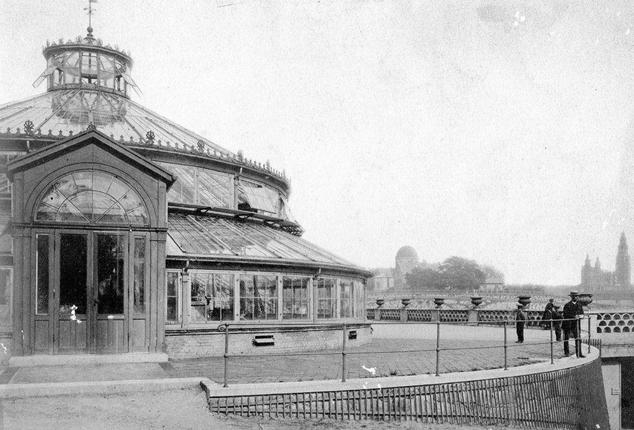
/
13
Three men and a little girl entering the Botanical Garden around 1910. Photo: Fritz Theodor Benzen.
A woman feeding birds in front of the Palm House in 1974. Photo: Copenhagen City Archives.
Visitors walking around the mirror pond in front of the Palm House in 1909. Photo: Fritz Theodor Benzen.
Snow-covered statue in the winter of 1942. Photo: Hjálmar R. Bárdarson.
The newly opened Botanical Garden and the bridge over the lake as seen from the Observatory Hill in 1881. In the background, the Municipal Hospital can be seen. Photo: Frederik Riise.
The view from the Rock Gardens in 1909. Photo: Fritz Theodor Benzen.
The lake in the Botanical Garden in 1904. Photo: Fritz Theodor Benzen.
Map of Copenhagen in 1890.
The first house in the Palm House in 1923. Photo: Museum of Copenhagen.
View over the Botanical Garden and the Botanical Museum from an apartment on Gothersgade in 1918.
View from the Botanical Museum over the lake in 1985. Photo: Bent Krøyer.
The Botanical Garden in 1918. In the background, the Observatory on the hill can be seen. Photo: Peter Elfelt.
The entrance to the Palm House in 1918. In the background, you can glimpse the Observatory and Rosenborg.
